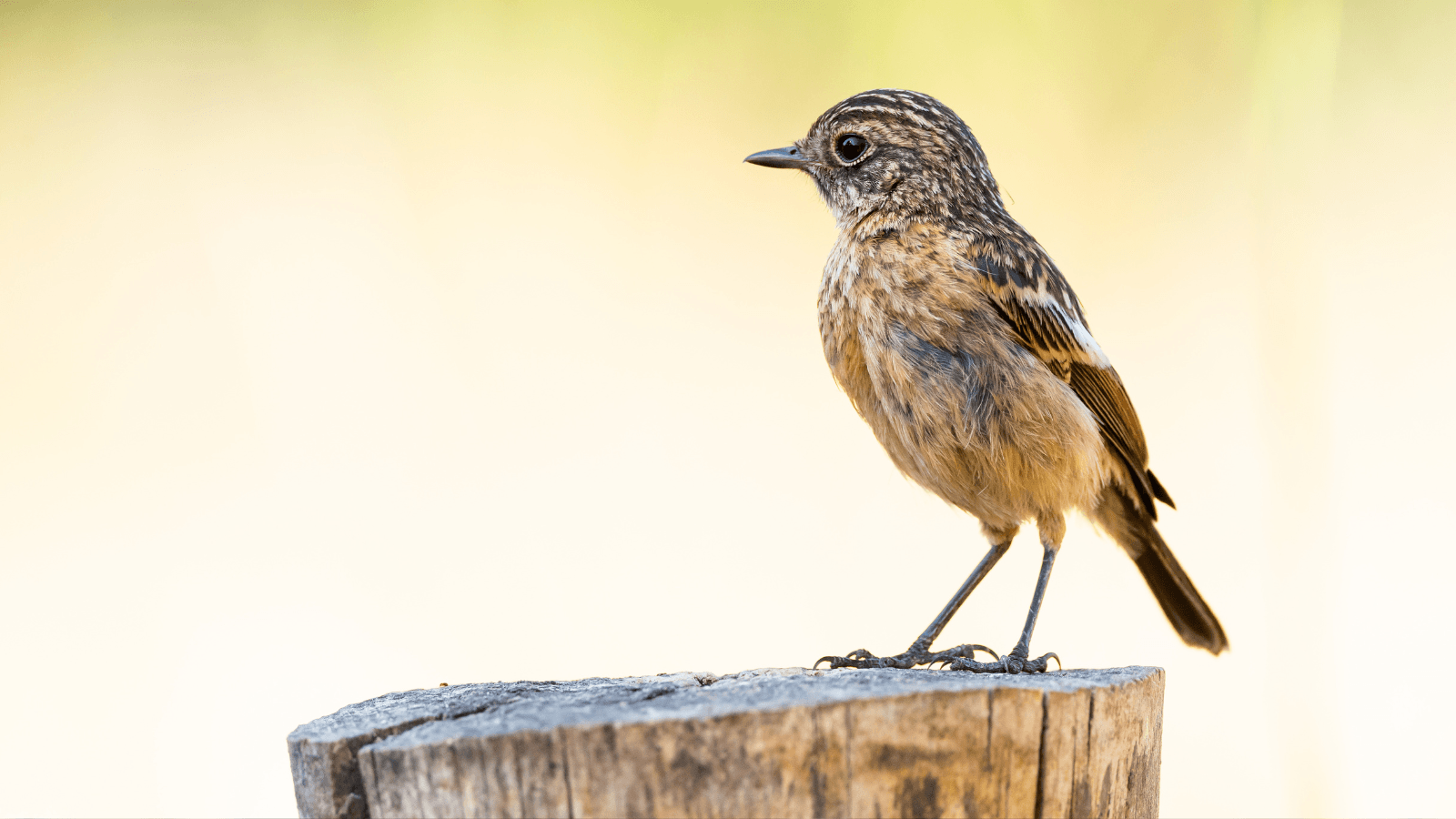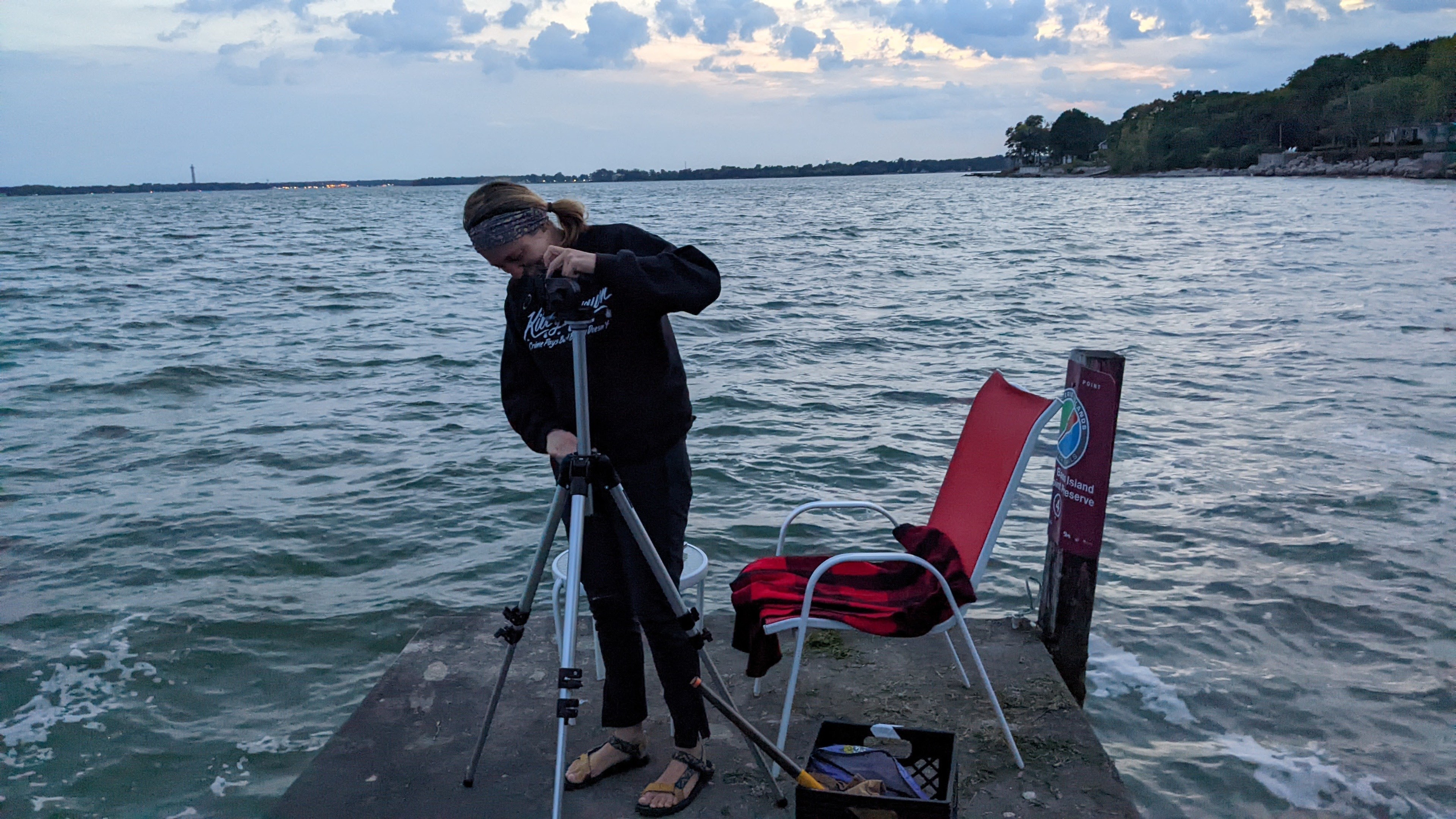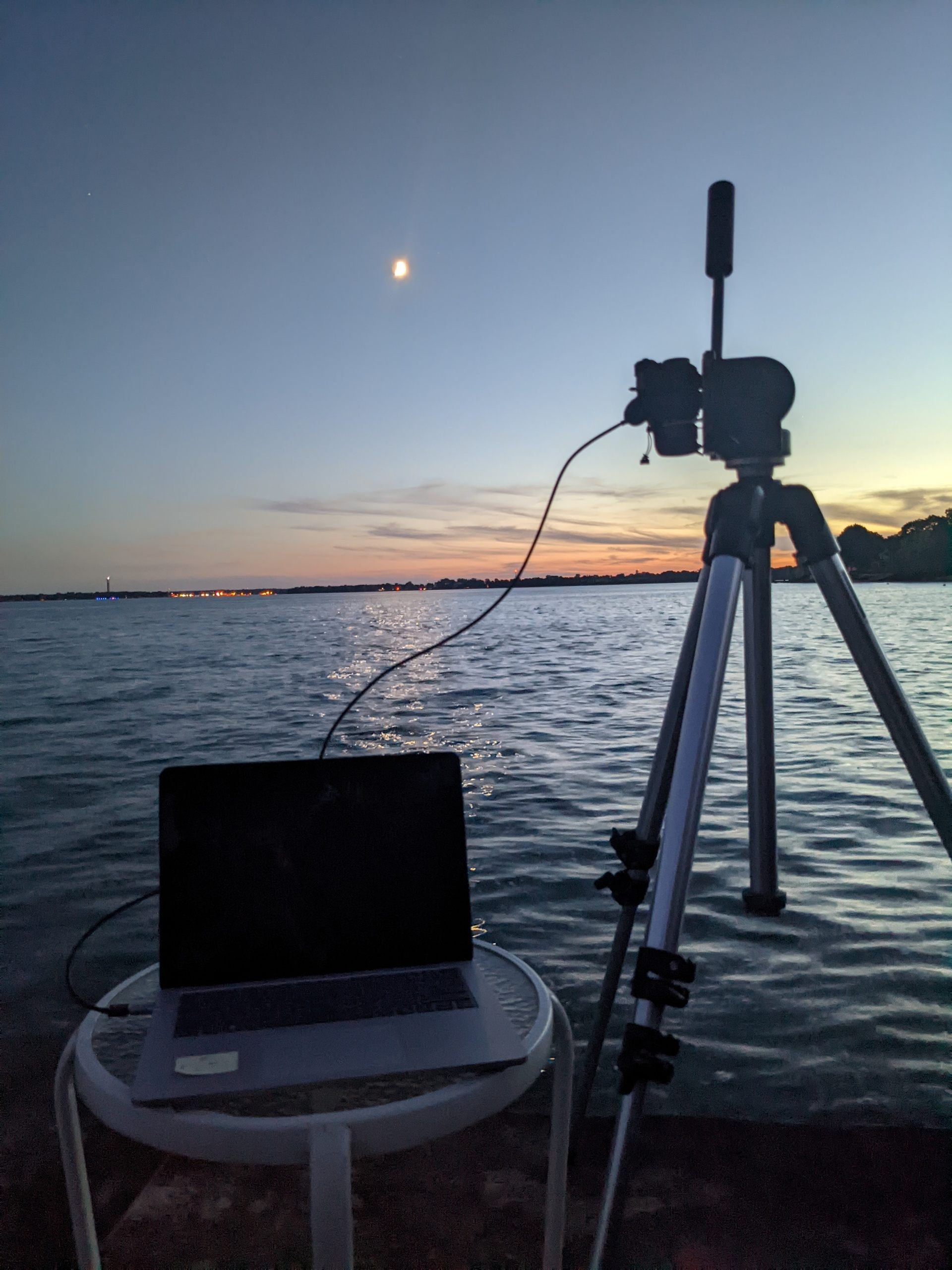Navigating by nature: BGSU research reveals songbirds' surprising reliance on Lake Erie islands for migration
Estimated Reading Time:
Initial data from a study by Dr. Verner Bingman and graduate student Murphy Harrington suggest the birds are using the Lake Erie islands to guide their flight orientation
By Laren Kowalczyk '07
Preliminary results from an ongoing study by Bowling Green State University researchers challenge the notion that nocturnal migratory songbirds rely exclusively on the setting sun, stars and Earth’s magnetic field to guide their flight orientation.
Data from the research that began in Fall 2022 by BGSU psychology professor and animal navigation expert Dr. Verner Bingman and graduate student Murphy Harrington suggest migratory songbirds take topographic features into account as they fly over the western Lake Erie basin.
“There’s a history that argues migratory songbirds have a direction they keep going in and are indifferent to the space they’re flying over,” said Bingman, a Distinguished Research Professor in the Department of Biological Sciences. “In line with previous research, our preliminary research suggests they’re assessing landscape features and exploiting spatial references to guide their flight orientation.”
In the study funded by Ohio Sea Grant, large numbers of songbirds captured on infrared cameras during their migration over Lake Erie's Middle Bass Island fly parallel to the linear alignment of the island archipelago — Middle Bass, South Bass and Kelleys Island in the U.S. and Pelee Island in Canada.
The portion of the lake that birds are crossing is only about 20 to 30 miles wide, but Bingman said interfering influences during flight – the most prominent of which is wind drift – can present challenges to the small birds.
“The lake is not incredibly wide, but wide enough to be potentially dangerous,” he said. “Under conflicting or challenging wind conditions, especially in spring, many songbirds prefer to follow the coastline around Ohio's Lake Erie rather than cross the lake.”
Ohio Sea Grant works to solve the Lake Erie region’s most important environmental and economic issues through research, education, outreach and partnerships with academia, government agencies and the private sector.
Harrington, who is pursuing a master’s degree in biology, set up an infrared camera on Middle Bass Island between August and October 2022 during the birds’ migration south. She repeated the process in the spring, capturing the birds as they made their way north. The study will continue through Fall 2023, with a final report to follow.
Harrington analyzed the flight orientation of nearly 500 migratory songbirds, including warblers, sparrows, thrushes, vireos, flycatchers and orioles.
For comparison, a control site was set up in Bowling Green, using an infrared camera to detect individual birds migrating over the rural and generally similar northwestern Ohio landscape. Bingman said they also compared the results from Middle Bass Island to broad patterns of bird migration over Cleveland, detected by Doppler radar.
“We’re contrasting a site where there’s a clear leading line feature — the island archipelago — and Bowling Green, where there’s not,” Bingman said. “The directional observations of birds over Lake Erie seem much more concentrated than the spread of directions in Bowling Green, which is entirely consistent with the idea that when crossing Lake Erie, the birds are using the islands to hold a ground-based direction and thus avoid being drifted one way or another.”
Understanding the migration patterns of nocturnal songbirds is critical to promote the protection of their natural habitats. Additionally, the research could inform future decisions regarding installing wind turbines in Lake Erie.
“We want to protect wildlife,” he said. “If there’s a better understanding of how the birds distribute over Lake Erie during migration, we can use the data we’ve been collecting to inform policymakers of where any eventual wind turbines would have the least impact on the passage of migratory birds.”
Related Stories
Media Contact | Michael Bratton | mbratto@bgsu.edu | 419-372-6349
Updated: 10/19/2023 02:40PM








